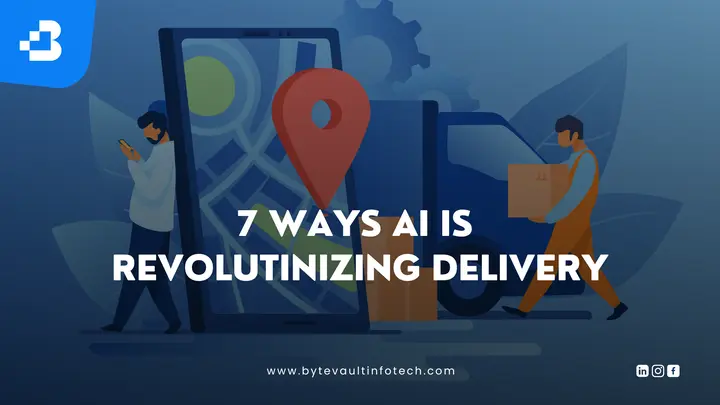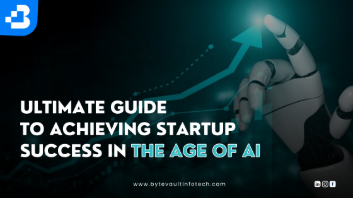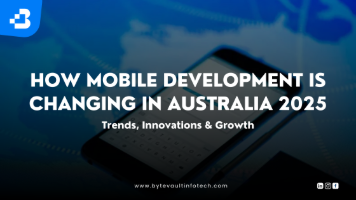
Introduction
We’ve all felt that spark of instant gratification: the buzz of your phone, the notification that your package or piping-hot pizza is just minutes away. But behind that seemingly simple countdown lies a symphony of data, a complex logistical ballet choreographed by algorithms. For years, these algorithms were based on relatively simple rules—find the shortest route, assign the nearest driver. But as our demand for everything-on-demand explodes, these old systems are cracking under the pressure. Enter the game-changer: Artificial Intelligence.
AI isn't just tweaking the old rules; it's rewriting the entire playbook. It’s transforming delivery partner algorithms from simple direction-givers into intelligent, predictive, and hyper-efficient logistical brains. This seismic shift is creating a future where deliveries are faster, more reliable, and more cost-effective than ever before. Ready to look under the hood? Here are the 7 most powerful ways AI is revolutionizing the algorithms that power our delivery economy.
Unleashing Hyper-Efficient Routes with Dynamic Optimization
Forget static maps. Traditional algorithms might find the shortest path, but AI finds the smartest path. By processing thousands of real-time data points simultaneously, dynamic route optimization is a complete game-changer.
AI considers variables that a human or a simple algorithm could never juggle at once:
-
Live Traffic Patterns: Rerouting drivers around unexpected accidents or congestion.
-
Weather Conditions: Adjusting routes and ETAs for rain, snow, or heavy winds.
-
Road Closures & Events: Factoring in marathons, construction, or parades.
-
Turn Complexity: Prioritizing routes with easier, safer turns to save precious seconds.
The result? Companies using AI-powered route optimization have reported up to a 30% reduction in fuel costs and a 20% increase in delivery capacity without adding more drivers. It's about working smarter, not harder.
Predicting the Future with Predictive Demand Forecasting
What if you could know where an order will be placed before the customer even opens the app? That's the power of predictive demand forecasting. AI analyzes historical data, holidays, local events, weather forecasts, and even social media trends to predict demand hotspots.
This allows delivery platforms to proactively:
-
Pre-position drivers near areas where demand is about to spike.
-
Encourage restaurants to prepare for rushes before they happen.
-
Ensure vehicle availability (like vans for grocery orders) is sufficient in the right neighborhoods.
This proactive approach dramatically cuts down on wait times and ensures a driver is always nearby when you need one, transforming the entire network from reactive to predictive.
Mastering the Art of Intelligent Order Batching
Assigning an order to the nearest driver sounds simple, but it's often inefficient. AI introduces intelligent order batching and assignment. This means grouping multiple orders together in the most logical way possible.
But AI goes deeper. It doesn't just look at location; it considers:
-
Food Temperature: Ensuring a hot pizza isn't batched with a tub of ice cream for a long trip.
-
Vehicle Capacity: Matching large grocery orders with drivers who have suitable vehicles.
-
Driver Performance: Assigning high-value or complex orders to top-rated, experienced partners.
-
Promised ETAs: Batching orders in a way that doesn't compromise the delivery time promised to any individual customer.
This intelligent assignment process maximizes the earnings for delivery partners and ensures every customer gets their order in optimal condition.
Personalizing the Partner Experience with Dynamic Incentives
Surge pricing is a blunt instrument. While it can draw drivers to a busy area, it’s not personalized. AI enables dynamic, personalized incentives. The algorithm can learn individual driver patterns and preferences to offer targeted bonuses that are far more effective.
For example, the AI might offer a specific bonus to a driver who consistently works lunch rushes to log in 15 minutes early, or provide a unique quest-based incentive ("Complete 3 deliveries in this zone in the next hour for an extra $10") to fill a specific predicted gap in coverage. This boosts driver engagement and satisfaction while giving companies surgical control over their supply network.
Boosting Safety and Trust with Behavioral Analytics
The safety of delivery partners and the security of the platform are paramount. AI is being used to analyze telematics and behavioral data to identify risks and prevent fraud. By monitoring factors like harsh braking, excessive speeding, and route deviations, the AI can:
-
Identify and flag unsafe driving habits, offering drivers feedback or additional training.
-
Detect fraudulent activity, such as a driver falsely marking an order as delivered.
-
Verify identities through passive biometric checks to prevent account sharing.
This creates a safer, more trustworthy ecosystem for customers, restaurants, and delivery partners alike.
Delivering Pinpoint-Accurate ETAs
Nothing frustrates a customer more than an inaccurate Estimated Time of Arrival (ETA). AI has revolutionized this by learning from millions upon millions of previous deliveries. It calculates ETAs based not on simple distance and speed limits, but on a mind-boggling number of learned variables:
-
The time it typically takes a specific restaurant to prepare an order on a Tuesday night.
-
The average time it takes to find parking on a particular city block.
-
The delay caused by waiting for an elevator in a large apartment building.
This level of granularity allows AI to provide hyper-accurate ETAs, often down to the minute, which dramatically improves customer satisfaction and trust.
Supercharging Support with Automated Systems
When something goes wrong, a quick resolution is key. AI-powered chatbots and automated support systems are now the first line of defense. They can instantly handle common queries from both customers and drivers, such as "Where is my order?" or "I can't find the customer's address." This frees up human support agents to handle the most complex and sensitive issues, leading to faster resolution times for everyone and reducing operational costs.
Conclusion: The Delivery of Tomorrow is Already Here
The integration of Artificial Intelligence into delivery partner algorithms represents one of the most significant leaps forward in modern logistics. It’s a shift from a one-size-fits-all model to a dynamic, predictive, and deeply personalized system. For customers, this means faster, more reliable deliveries. For delivery partners, it means higher earning potential and a smarter way to work. And for businesses, it unlocks unprecedented levels of efficiency and sustainability.
The next time your phone dings with an updated, more accurate delivery time, you’ll know it’s not just a map—it’s a powerful AI brain working tirelessly to make your on-demand world possible. The revolution isn't coming; it's already at your doorstep.
Frequently Asked Questions (FAQ)
Q1: How does AI help in last-mile delivery?
AI fundamentally optimizes last-mile delivery in several key ways. It uses predictive analytics to forecast demand, intelligently batches multiple orders, assigns them to the most suitable driver, and calculates hyper-dynamic routes that adapt in real-time to traffic and other variables. This combination drastically reduces delivery times, lowers operational costs, and improves overall efficiency.
Q2: What is a delivery algorithm?
A delivery algorithm is a complex set of rules and calculations used by a computer system to manage the entire delivery process. In modern platforms like Uber Eats or DoorDash, this algorithm is powered by AI and machine learning. Its primary jobs are to match customer orders with the best available delivery partners, calculate the most efficient routes, and manage pricing and incentives to balance supply and demand on the platform.
Q3: Can AI-powered route optimization really save money?
Absolutely. AI-powered route optimization saves money in multiple ways. By finding the most efficient routes, it reduces fuel consumption and vehicle wear-and-tear. By enabling intelligent batching (delivering multiple orders in one trip), it significantly increases the number of deliveries a partner can make per hour. This lowers the effective cost-per-delivery for the platform, a critical metric for profitability in the logistics industry.
Q4: What are the main challenges of using AI in delivery services?
The main challenges are primarily ethical and human-centric. These include a lack of algorithmic transparency (the "black box" problem), potential for bias against certain partners, the intense pressure for efficiency placed on gig workers, and data privacy concerns. Balancing the drive for technological optimization with the well-being and fair treatment of human delivery partners is the key challenge for the industry.


